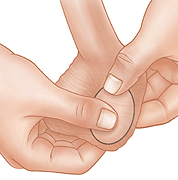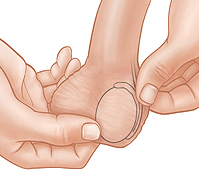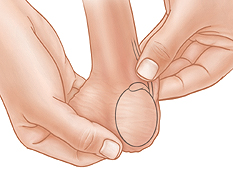Testicular cancer is the most common form of cancer in men ages 15 to 35. Most cases affect men younger than 55. It usually shows up as a painless lump in the testicle. The good news is that a simple monthly self-exam may help find trouble before it gets more serious. When detected early, testicular cancer is almost 100% curable.
Doing your TSE
Some health care providers advise doing a TSE once a month, during or after a warm shower. The warm shower helps the scrotum relax. This makes the exam easier to do. Spend about 3 to 5 minutes feeling for lumps, firm areas, or changes. If you do find a problem, don’t panic. Call your health care provider and make an appointment.
Check the testicles
Hold your scrotum in the palm of your hand. Roll each testicle gently between the thumbs and fingers of both hands. Feel for changes in each testicle, one at a time.
Check the epididymis
The epididymis is a raised, rim-like structure responsible for storing sperm. It runs along the top and back of each testicle and it may feel tender when you press on it. Gently feel each epididymis for changes. A spermatocele is a cyst filled with fluid. It may be felt on or near the epididymis or testicle. Most often, spermatoceles are painless and not cancerous.
Check the vas deferens
The vas deferens is a little tube that runs up from the top of each testicle. A normal vas deferens feels like a firm piece of cooked spaghetti. Feel for changes above each testicle.
Professional screening
If you feel anything that doesn't seem normal, tell your health care provider right away. In addition to doing your own TSE, you should also see your health care provider for regular checkups.
Featured in




